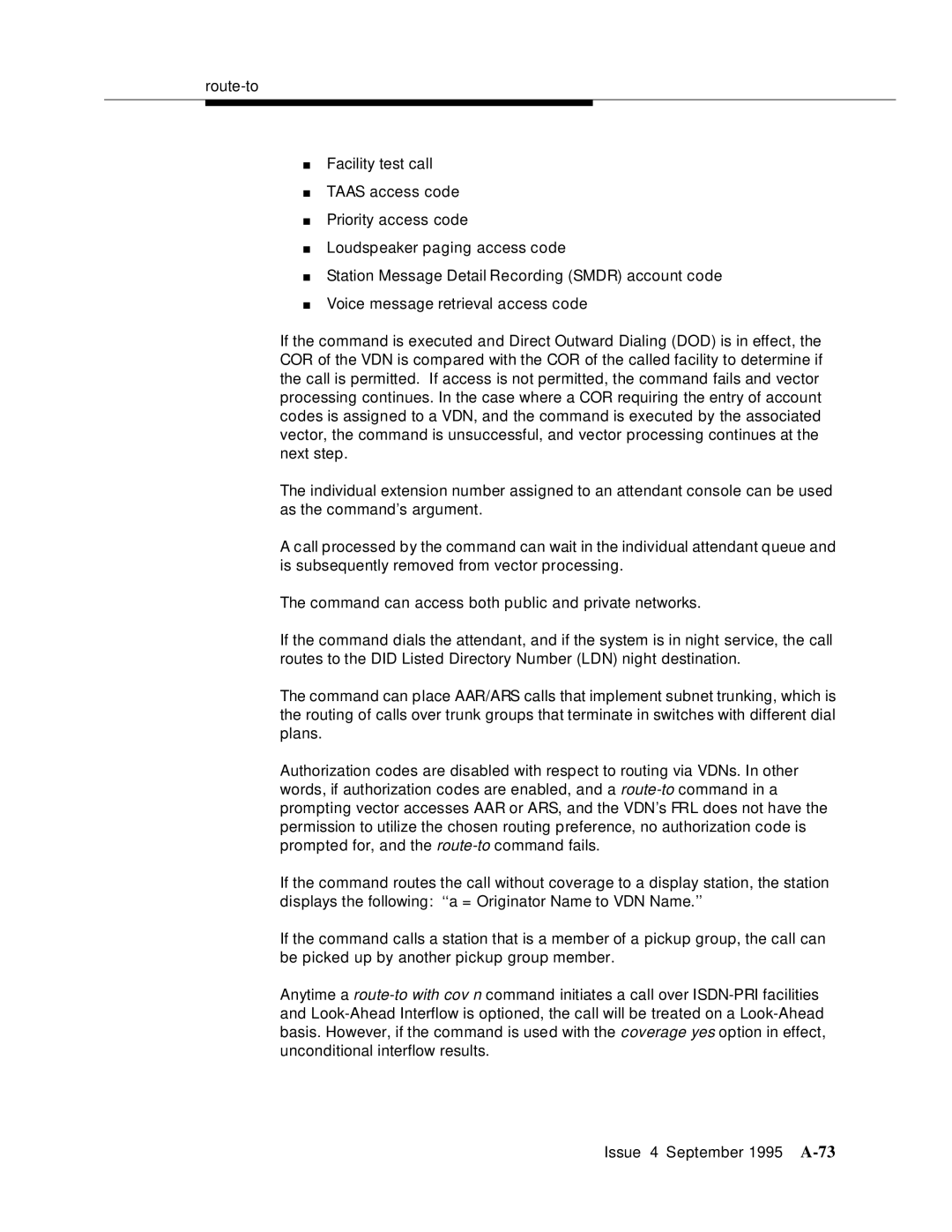■Facility test call
■TAAS access code
■Priority access code
■Loudspeaker paging access code
■Station Message Detail Recording (SMDR) account code
■Voice message retrieval access code
If the command is executed and Direct Outward Dialing (DOD) is in effect, the COR of the VDN is compared with the COR of the called facility to determine if the call is permitted. If access is not permitted, the command fails and vector processing continues. In the case where a COR requiring the entry of account codes is assigned to a VDN, and the command is executed by the associated vector, the command is unsuccessful, and vector processing continues at the next step.
The individual extension number assigned to an attendant console can be used as the command’s argument.
A call processed by the command can wait in the individual attendant queue and is subsequently removed from vector processing.
The command can access both public and private networks.
If the command dials the attendant, and if the system is in night service, the call routes to the DID Listed Directory Number (LDN) night destination.
The command can place AAR/ARS calls that implement subnet trunking, which is the routing of calls over trunk groups that terminate in switches with different dial plans.
Authorization codes are disabled with respect to routing via VDNs. In other words, if authorization codes are enabled, and a
If the command routes the call without coverage to a display station, the station displays the following: ‘‘a = Originator Name to VDN Name.’’
If the command calls a station that is a member of a pickup group, the call can be picked up by another pickup group member.
Anytime a
Issue 4 September 1995
